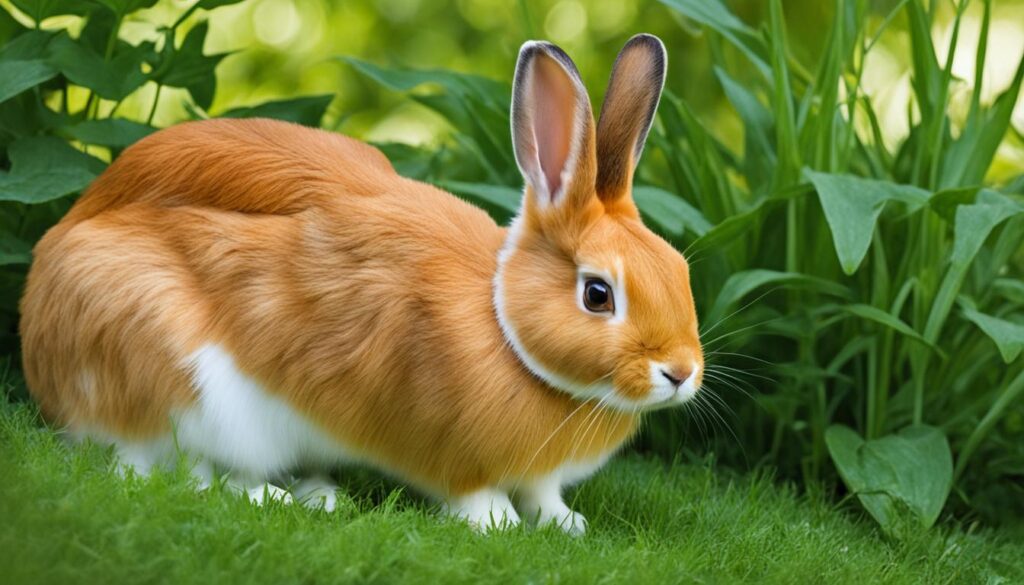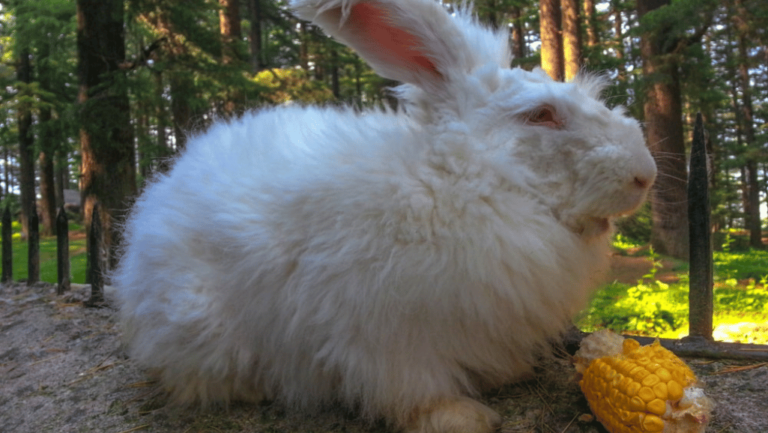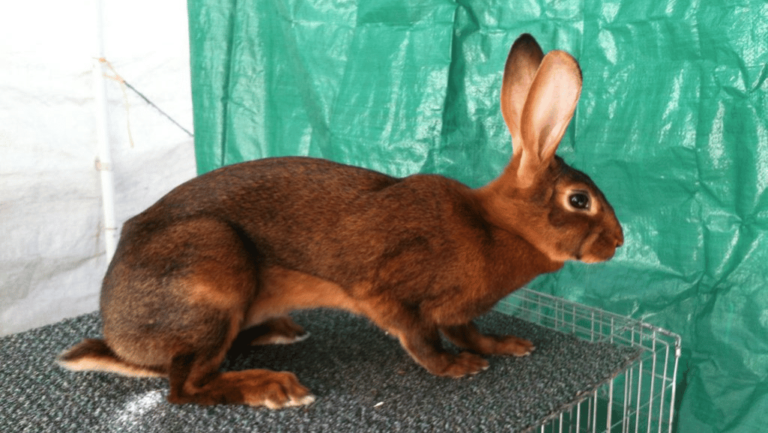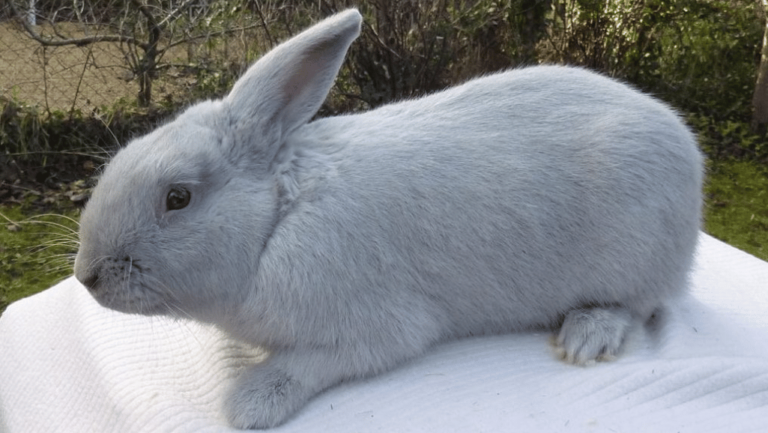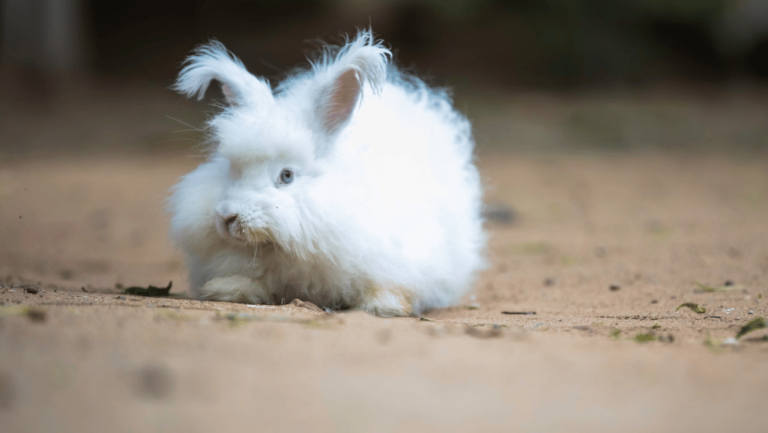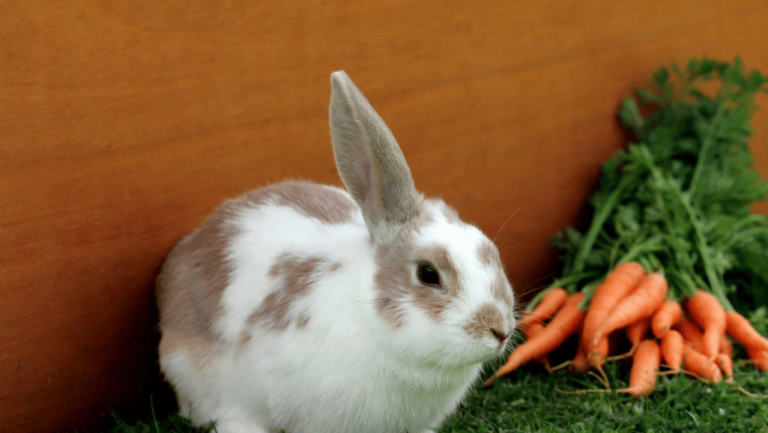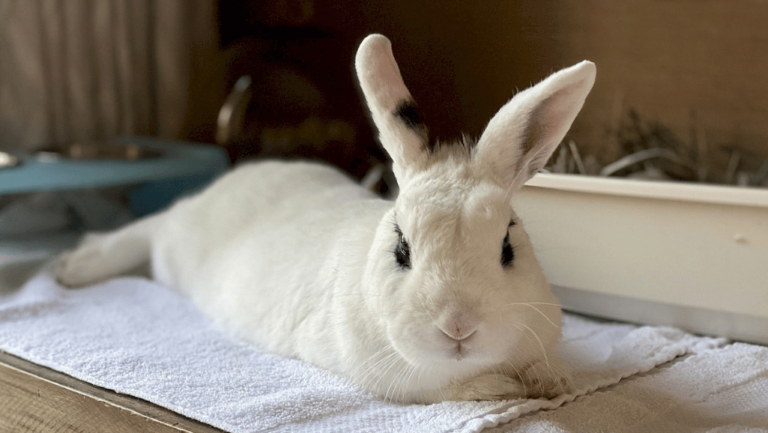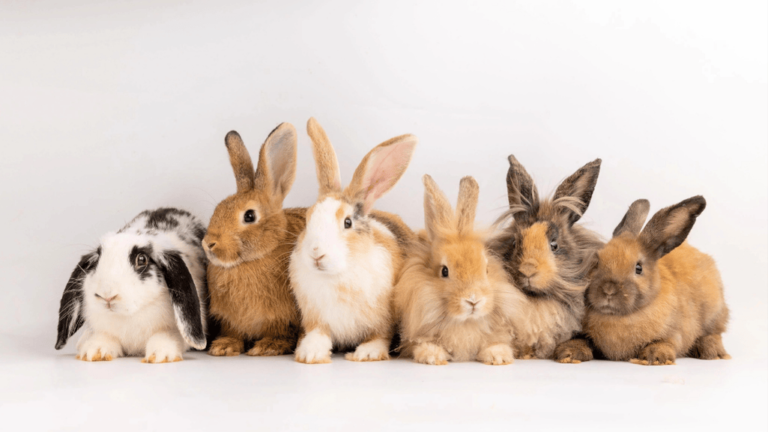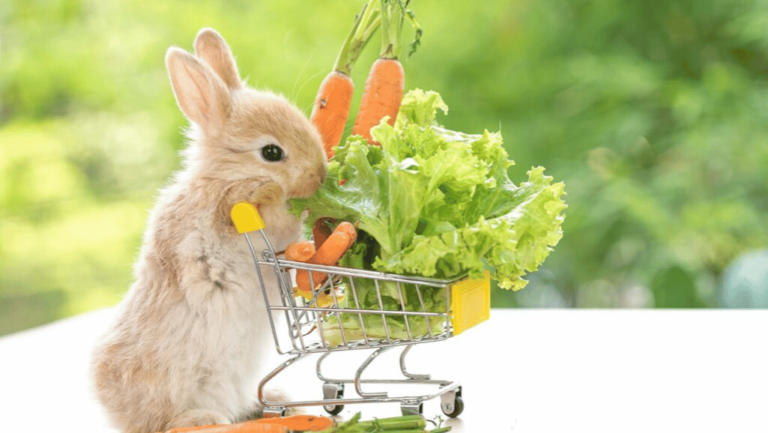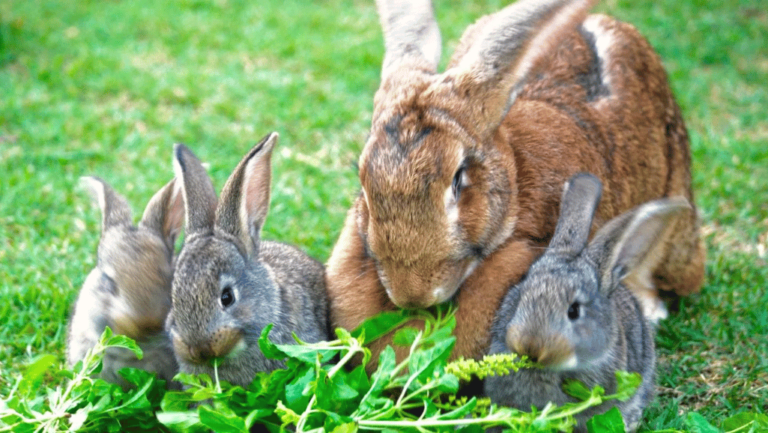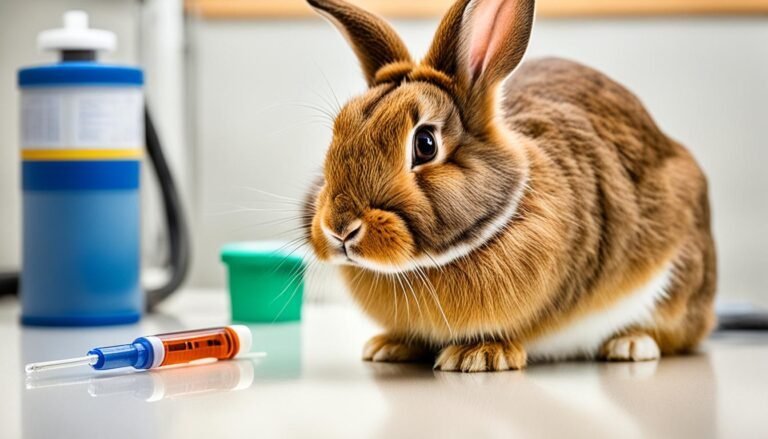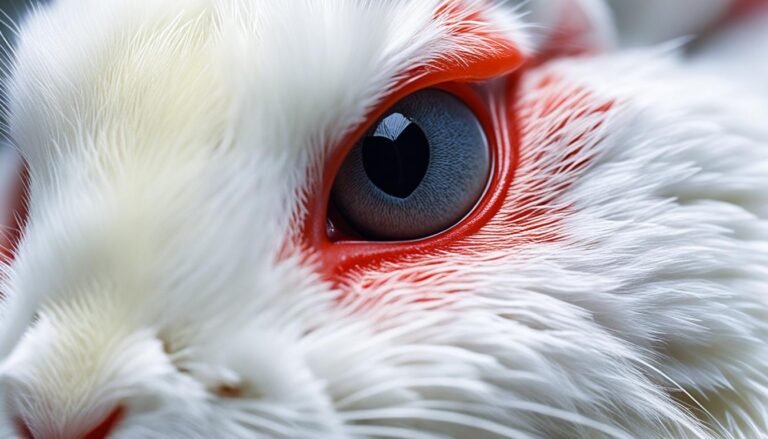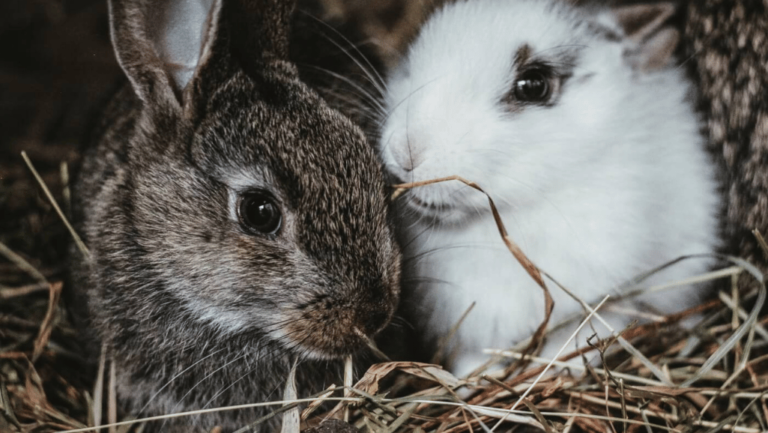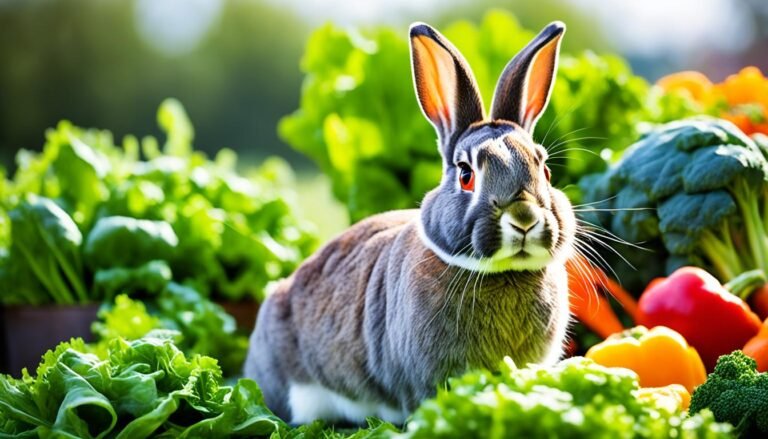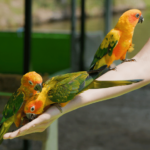Welcome to our article on Palomino Rabbit Breeds, the shining stars among domestic rabbit varieties. These rabbits are truly a sight to behold with their enchanting golden coats that resemble the color of pure gold. In this article, we will delve into the fascinating history, characteristics, care, and conservation status of these remarkable rabbits.
The Palomino Rabbit Breeds have a prestigious reputation in the world of rabbit shows, as they are considered one of the finest examples of rare rabbit breeds. Their striking appearance, combined with their gentle temperament, has made them a popular choice among enthusiasts and breeders alike.
Key Takeaways:
- Palomino Rabbit Breeds are known for their stunning golden coats.
- They are highly prized in the world of rabbit shows and are considered one of the finest rare rabbit breeds.
- Their gentle temperament makes them excellent pets.
- Palomino Rabbits require proper care to maintain their health and well-being.
- It is important to preserve and promote the Palomino Rabbit Breeds to ensure their continued existence.
Breed Facts
The Palomino Rabbit is a versatile breed known for its adaptability and diverse uses. Whether it’s for meat production, exhibition purposes, or as a beloved pet, Palomino rabbits excel in all roles. They possess a unique set of characteristics that make them a popular choice among rabbit enthusiasts.
Weight and Size
Palomino rabbits typically have an adult weight ranging from 8 to 11 lbs, with some individuals reaching even higher weights. Their medium to large size makes them substantial rabbits, known for their solid build and muscular bodies.
Temperament
One of the standout features of Palomino rabbits is their friendly and sociable temperament. They have a natural affinity for human companionship, making them a joy to interact with. These rabbits are known for being easygoing, docile, and adaptable, making them suitable for novice rabbit owners.
Maturity and Hardiness
Palomino rabbits mature quickly compared to other breeds, reaching adulthood within a relatively short period. This quality makes them an efficient choice for meat production. Additionally, they possess excellent hardiness, allowing them to adapt well to various climatic conditions, making them a versatile breed for different regions.
Curious Explorers
Palomino rabbits have an innate curiosity and love to explore their surroundings. They enjoy hopping, investigating, and engaging with their environment. Providing them with ample space and stimulating toys or obstacles will keep them entertained and fulfill their natural inclination to explore.
| Palomino Rabbit Breed Facts | |
|---|---|
| Weight Range | 8 – 11 lbs |
| Temperament | Friendly and sociable |
| Maturity | Quick to mature |
| Hardiness | Adaptable to various climates |
| Explorative Nature | Curious and loves to explore |
With their ideal weight range, friendly temperament, early maturity, hardiness, and natural curiosity, Palomino rabbits are a versatile and delightful breed to own. Whether you’re seeking a companion, a show animal, or a rabbit for meat production, Palomino rabbits are sure to bring joy and fulfillment to any rabbit lover.
Breed Origin and History
The Palomino Rabbit Breed originated from the efforts of Mark Young, a renowned breeder and founder of the Lone Pine Rabbitry in Washington state. In the late 1940s, Young began experimenting with crossbreeding different commercial-typed rabbits in search of a unique breed. Through meticulous breeding and selective pairings, he developed a breed that he initially named “Tawnies” due to their light yellow and buckskin coloration.
Young’s dedication to perfecting the breed caught the attention of other like-minded breeders who shared his vision. With their support and collaboration, the breed’s distinctive coloration and characteristics were further refined. It was during this time that the breed made significant strides and caught the attention of the American Rabbit Breeders Association (ARBA).
The ARBA acknowledged the breed’s potential and provided Young and his fellow breeders with a working standard under the name “Washingtonian.” This recognition was a significant milestone for the breed, establishing it as a distinct and valued rabbit variety within the rabbit breeding community.
Finally, in 1957, the ARBA officially recognized the breed as the Palomino Rabbit, solidifying its place in the world of rabbit breeds. Today, the Palomino Rabbit’s unique history and captivating golden coat continue to captivate breeders and enthusiasts alike.
| Originator | Breed Name | Year of Official Recognition by ARBA |
|---|---|---|
| Mark Young | Palomino Rabbit | 1957 |
Characteristics of the Palomino Rabbit
The Palomino Rabbit is a medium to large-sized breed known for its attractive appearance. With their distinct features and temperament, they are a popular choice among rabbit enthusiasts. Let’s take a closer look at the key characteristics of the Palomino Rabbit:
Palomino Rabbit Appearance
The Palomino Rabbit has a commercial body type, with a robust build and well-rounded features. When fully grown, they typically weigh between 8 to 10 lbs, making them a substantial breed. Their compact yet muscular physique adds to their charm and overall appeal.
Palomino Rabbit Coat
The coat of the Palomino Rabbit is one of its most defining characteristics. It is known for its beautiful golden or lynx coloration, which gives the breed its name. The coat is coarse in texture and can be described as short to medium in length. The rollback fur adds a touch of elegance, further highlighting their stunning appearance.
Palomino Rabbit Color
As mentioned earlier, the Palomino Rabbit is available in two color varieties: golden and lynx. The golden variety is characterized by a rich, warm tone reminiscent of pure gold, while the lynx variety features a captivating blend of golden hues with darker markings. Both variations exude an air of sophistication and visual appeal.
Palomino Rabbit Temperament
Palomino rabbits are known for their docile and friendly nature. They have a calm temperament, which makes them ideal companions for individuals, families, and children. They enjoy socializing and bonding with their human counterparts, bringing joy and companionship to their owners’ lives.
If you’re looking for a rabbit breed that is not only visually stunning but also possesses a gentle and amiable personality, the Palomino Rabbit is an excellent choice.
Health and Care of Palomino Rabbits
Proper health care is crucial for ensuring the well-being and longevity of Palomino rabbits. By following a few guidelines, you can help your furry friend live a happy and healthy life.
Lifespan of Palomino Rabbits
On average, Palomino rabbits have a lifespan of 5 to 8 years. However, with proper care and attention, they can live even longer, providing you with many years of companionship.
Common Health Issues
Like all rabbits, Palomino rabbits are susceptible to certain health issues. It’s important to be aware of these conditions and take appropriate measures to prevent or address them.
- Gastrointestinal stasis: Palomino rabbits can experience gastrointestinal stasis, a condition where their digestive system slows down or stops working properly. This can lead to a loss of appetite, bloating, and discomfort. Providing a high-fiber diet and regular exercise can help prevent this condition.
- Ear mites: Palomino rabbits are also prone to ear mites, tiny parasites that can cause irritation and discomfort. Regular ear checks and proper cleaning can help prevent infestations.
- Malocclusion: Malocclusion is a dental condition in which the teeth do not align properly. Palomino rabbits can develop overgrown teeth, which can result in difficulty eating and potential health complications. Regular dental checkups and a diet that promotes dental health can help prevent this issue.
Grooming Needs
Palomino rabbits have low grooming needs and are relatively easy to care for in terms of grooming.
During shedding season, they may require occasional brushing to remove loose fur and prevent matting. This will also help to minimize hairballs and digestive issues.
Diet and Nutrition
A balanced diet is essential for the overall health and well-being of Palomino rabbits. Their diet should consist mainly of hay, supplemented with pellets and fresh vegetables.
Hay: Hay should make up the majority of a Palomino rabbit’s diet, accounting for at least 70%. High-quality grass hay, such as timothy hay, provides essential fiber and helps maintain proper digestive function. It also promotes dental health by wearing down their teeth naturally.
Pellets: Pellets formulated specifically for rabbits can be given in moderation. Look for pellets that are high in fiber and low in sugar and fat. Avoid overfeeding, as excessive pellet consumption can lead to obesity.
Fresh Vegetables: Fresh vegetables can be offered in small amounts as a treat and a source of additional nutrients. Some suitable vegetables for rabbits include leafy greens like kale, parsley, and cilantro, as well as carrots and bell peppers.
Veterinary Care
Regular veterinary checkups are essential for the health and well-being of Palomino rabbits. A knowledgeable veterinarian can provide guidance on proper nutrition, perform routine health checks, and address any health concerns.
Additionally, it’s important to keep your Palomino rabbit up to date on vaccinations, such as those for rabbit hemorrhagic disease (RHD) and myxomatosis, which can help prevent these potentially fatal diseases.
Image:
With proper health care and attention, Palomino rabbits can thrive and bring joy to your life for many years to come. Remember to provide a balanced diet, regular grooming, and veterinary care to ensure the best possible health and happiness for your furry friend.
Palomino Rabbit Habitat and Exercise
Palomino rabbits, like any other rabbit breed, require a suitable living space and regular exercise to thrive both physically and mentally. Whether you choose to keep them indoors or outdoors will depend on your preference and the climate in your area.
If you opt for indoor housing, provide a spacious and well-ventilated enclosure where your Palomino rabbit can hop, explore, and feel comfortable. Avoid wire flooring as it can cause sore hocks, which can be painful for your rabbit. Instead, opt for solid flooring or provide soft bedding to prevent any discomfort. Additionally, ensure that the indoor space is free from hazards and that your rabbit has access to fresh air and natural light.
For outdoor housing, a sturdy and secure rabbit hutch is essential to protect your Palomino rabbit from predators and extreme weather conditions. A recommended option is the Trixie Rabbit Hutch with an outdoor run, providing ample space for your rabbit to move around freely. The hutch should have a comfortable sleeping area, a separate space for feeding, and a large exercise run where your rabbit can enjoy the outdoors under your supervision.
In both indoor and outdoor settings, it’s important to create an enriching environment for your Palomino rabbit. Add toys, tunnels, and platforms to encourage physical activity and mental stimulation. These additions will keep your rabbit engaged and prevent boredom.
Note: Image of a Palomino rabbit playing in a spacious hutch or exercise area would be visually engaging and relevant to this section.
Alongside a suitable habitat, regular exercise is essential for Palomino rabbits to maintain their overall health and well-being. They are active animals and require at least three hours of free-range time outside their hutch or enclosure each day. This exercise time allows them to stretch their legs, hop around, and satisfy their natural instincts.
During exercise sessions, ensure a safe and supervised area for your Palomino rabbit to explore. Remove any potential hazards, such as toxic plants or small objects that could be swallowed. Keep in mind that rabbits are curious animals and may chew on electrical cords or furniture, so rabbit-proof the area accordingly.
Palomino rabbits can be trained to use a litter tray, which makes exercise time more enjoyable for both you and your rabbit. Place the litter tray in the exercise area and encourage your rabbit to use it by providing positive reinforcement and rewards.
Table: Recommended Palomino Rabbit Exercise Equipment
| Exercise Equipment | Description |
|---|---|
| Cardboard tunnels and tubes | Provide a fun and stimulating environment for your rabbit to explore and hide in. Can be easily replaced once worn out. |
| Chew toys | Offer a variety of safe and rabbit-friendly chew toys to keep your Palomino rabbit’s teeth healthy and prevent boredom. |
| Jump obstacles | Set up small hurdles or jumps for your rabbit to hop over, stimulating their natural agility and providing exercise. |
| Treat-dispensing toys | Engage your Palomino rabbit mentally and physically by using treat-dispensing toys, encouraging physical activity while rewarding them with tasty treats. |
With adequate living space and regular exercise, your Palomino rabbit will thrive and live a healthy, enriched life.
Palomino Rabbit Diet and Feeding
In order to ensure the health and well-being of Palomino rabbits, it is important to provide them with a balanced diet that meets their nutritional needs. The diet should consist of a combination of hay, pellets, and fresh vegetables.
The Importance of Hay
Hay is an essential part of a Palomino rabbit’s diet, accounting for at least 70% of their total food intake. It provides necessary fiber, promotes healthy digestion, and helps keep their teeth in good condition. Timothy hay is an excellent choice for Palomino rabbits, as it is high in fiber and low in calcium.
High-Quality Pellets
Palomino rabbits should also be given high-quality pellets that are specifically formulated for their dietary needs. These pellets contain a balanced blend of essential nutrients and vitamins. When choosing pellets, look for brands that prioritize natural ingredients and avoid additives or fillers. A popular option for Palomino rabbits is Kaytee Food from the Wild Rabbit Food, which supports digestive health.
Fresh Vegetables
In addition to hay and pellets, fresh vegetables should be included in the Palomino rabbit’s diet. These vegetables provide essential vitamins and minerals. Some recommended options include leafy greens like kale, romaine lettuce, and cilantro. It’s important to introduce new vegetables gradually and monitor their response to ensure they tolerate them well.
Here is a sample table outlining the recommended diet for Palomino rabbits:
| Food Type | Portion | Frequency |
|---|---|---|
| Timothy Hay | Unlimited access | Every day |
| Pellets | 1/4 cup | Once daily |
| Fresh Vegetables | 1 cup | Once daily |
Remember to always provide fresh, clean water for your Palomino rabbit and ensure they have access to it at all times. Additionally, monitor their weight and adjust their food portions accordingly to maintain a healthy body condition.
Feeding your Palomino rabbit a well-rounded and nutritious diet is key to their overall health and happiness. By following the guidelines outlined above, you can ensure that your Palomino rabbit receives the proper nourishment it needs to thrive.
Palomino Rabbit Temperament and Trainability
Palomino rabbits are known for their fantastic temperament, making them a popular choice for individuals, families, and children alike. These rabbits have a docile, friendly, and calm nature, which makes them easy to handle and interact with.
Palomino rabbits thoroughly enjoy socializing with their owners and forming strong bonds. It’s crucial to provide them with ample time outside of their hutch to explore their surroundings and engage in activities that promote mental stimulation and physical exercise. Spending quality time with your Palomino rabbit will strengthen your bond and contribute to their overall wellbeing.
Although rabbits are not as easily trainable as cats or dogs, Palomino rabbits can learn certain behaviors and commands. For example, with patience and consistency, they can be taught to use a litter tray, respond to their names, and come when called.
When training Palomino rabbits, it’s essential to respect their personal space, especially when they are new to their environment. Allow them to settle in gradually and avoid overwhelming them with too many new experiences at once. By providing a calm and supportive environment, Palomino rabbits will feel safe and comfortable, increasing their willingness to learn and cooperate.
Palomino Rabbit Temperament and Trainability:
- Palomino rabbits have a docile, friendly, and calm temperament.
- They enjoy socializing with their owners and are suitable for individuals, families, and children.
- Ample time outside of the hutch is necessary for exploration and bonding.
- Palomino rabbits can be taught to use a litter tray and respond to their names.
- Respecting their personal space is important, especially when they are new to the home.
| Palomino Rabbit Temperament and Trainability | Key Points |
|---|---|
| Temperament | Docile, friendly, and calm |
| Sociability | Enjoy socializing with owners and suitable for individuals, families, and children |
| Bonding | Need ample time outside of the hutch to explore and bond |
| Trainability | Can be taught to use a litter tray and respond to their names |
| Respecting Personal Space | Important, especially when they are new to the home |
Palomino rabbits have a wonderful temperament, making them delightful companions. With patience, consistency, and respect for their personal space, you can train them to understand certain behaviors and commands, enhancing your relationship and ensuring their happiness.
Image:
Palomino Rabbit Breeds Conservation Status
Palomino rabbits, a beloved breed among enthusiasts, currently hold no conservation status. These rabbits are not considered at risk, thanks to their popularity and continuous breeding efforts. However, it is essential to emphasize the importance of preserving and expanding the population of rare rabbit breeds, including the Palomino rabbit. By supporting responsible breeding practices and maintaining the breed’s unique characteristics, we can ensure its longevity for future generations.
The Palomino Rabbit Co-Breeders Association, established in 1955, plays a crucial role in promoting and preserving the breed. They provide resources, guidance, and a platform for collaboration among Palomino rabbit breeders. Through their dedicated efforts, the breed continues to thrive and captivate rabbit enthusiasts around the world.
Joining forces with organizations like the Palomino Rabbit Co-Breeders Association is vital for the ongoing conservation and celebration of rare rabbit breeds, including the Palomino. Together, we can protect these valuable genetic resources and contribute to the diversity and vitality of the rabbit breeding community.
| Rabbit Breed | Conservation Status |
|---|---|
| Palomino Rabbit | No conservation status |
| Dutch Rabbit | Not at risk |
| Himalayan Rabbit | Not at risk |
| Chinchilla Rabbit | No conservation status |
Recommended Resources for Palomino Rabbit Owners
As a Palomino Rabbit owner, it’s essential to have access to reliable resources that provide valuable information on proper care and management. Whether you’re a novice or experienced with this magnificent breed, the following resources will assist you in housing, raising, and grooming your Palomino rabbits.
1. “Build Rabbit Housing” – Country Wisdom Bulletins
This comprehensive guidebook offers practical tips and step-by-step instructions on creating suitable housing for your Palomino rabbits. From designing comfortable hutches to building spacious enclosures, this resource provides valuable insights to ensure your rabbits have a safe and comfortable living space.
2. “Raising a Healthy Rabbit” – Country Wisdom Bulletins
Ensure your Palomino rabbits thrive in a healthy environment by referring to this invaluable resource. This guide covers essential topics such as nutrition, grooming, and disease prevention, helping you maintain optimal health for your furry companions.
3. “Raising Rabbits for Meat” by Callene & Eric Rapp
If you’re interested in utilizing your Palomino rabbits for meat production, this book is a must-have. It provides comprehensive guidance on breeding, raising, and processing rabbits for meat, equipping you with the knowledge and skills needed to embark on a successful meat rabbit enterprise.
These recommended resources offer a wealth of information and guidance for Palomino Rabbit owners. Whether you need assistance in constructing suitable housing, ensuring your rabbits’ well-being, or exploring opportunities in meat production, these resources will serve as your trusted companions throughout your Palomino Rabbit journey.
Conclusion
Palomino Rabbit Breeds are truly the golden standard among domestic rabbit varieties. With their enchanting golden coats, friendly temperament, and versatility as meat rabbits, show animals, or pets, they have captured the hearts of many enthusiasts. Their unique history, breed origin, and distinct characteristics make them a special addition to any rabbit lover’s collection.
Whether you’re a novice rabbit owner or an experienced breeder, the Palomino Rabbit Breeds offer beauty, charm, and a touch of gold to your rabbitry. Their stunning appearance, combined with their docile nature and sociable behavior, make them a joy to care for and interact with. Whether you’re looking for a rabbit to show off at competitions or a loving companion, the Palomino Rabbit Breeds are a perfect choice.
As the golden standard among rabbit breeds, Palomino rabbits have earned their place as a beloved and cherished breed. Their captivating coats and friendly personalities make them truly special. So, if you’re considering adding a Palomino rabbit to your family, get ready to experience the beauty and charm that this golden breed has to offer!
Frequently Asked Questions
What are Palomino Rabbit Breeds known for?
Palomino Rabbit Breeds are known for their enchanting golden coats and are considered a treasure among domestic rabbit varieties.
Who is the founder of the Palomino Rabbit Breed?
The Palomino Rabbit Breed was founded by Mark Young of the Lone Pine Rabbitry in Washington state.
When were Palomino Rabbits officially recognized by the American Rabbit Breeders Association (ARBA)?
Palomino Rabbits were officially recognized by the ARBA in 1957.
What is the average weight of Palomino Rabbits?
Palomino Rabbits have an adult weight ranging from 8 to 11 lbs.
What is the temperament of Palomino Rabbits?
Palomino Rabbits are known for being friendly, sociable, and easy to handle.
What is the history of the Palomino Rabbit Breed?
The Palomino Rabbit Breed has a rich history, with origins dating back to the early 1900s. It was developed by Mark Young, who crossed several commercial-typed rabbits and ultimately named the breed “Palomino.”
What are the characteristics of Palomino Rabbits?
Palomino Rabbits have a medium to large-sized body with coal and short to medium length fur. They come in two color varieties: golden and lynx. They have a calm temperament and enjoy socializing with their owners.
What are the common health issues of Palomino Rabbits?
Palomino Rabbits, like all rabbits, can be prone to health issues such as GI stasis, ear mites, and malocclusion.
What is the recommended diet for Palomino Rabbits?
The diet of Palomino Rabbits should consist mainly of hay, supplemented with pellets and fresh vegetables.
Can Palomino Rabbits be kept indoors and outdoors?
Yes, Palomino Rabbits can be kept both indoors and outdoors. They require a spacious hutch or enclosure and at least three hours of free-range time daily.
Are Palomino Rabbits easily trainable?
While not as easily trainable as cats or dogs, Palomino Rabbits can be taught to use a litter tray and respond to their names.
What is the conservation status of Palomino Rabbits?
Palomino Rabbits are not considered at risk and do not have a conservation status. However, future generations of breeders are needed to protect and expand the population of rare rabbit breeds.
What are some recommended resources for Palomino Rabbit owners?
Recommended resources for Palomino Rabbit owners include books and bulletins such as “Build Rabbit Housing” and “Raising a Healthy Rabbit” from Country Wisdom Bulletins, as well as “Raising Rabbits for Meat” by Callene & Eric Rapp.



